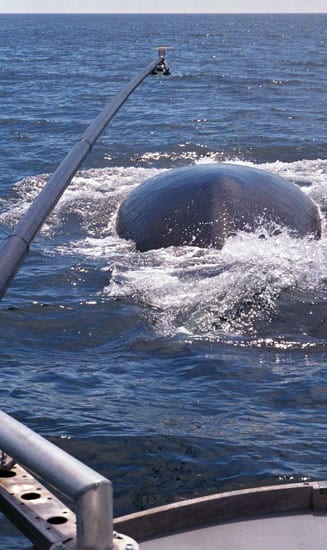Sperm Whale Lingo: Clicks and Buzzes Lead to Prey
May 31, 2006
Scientists from Woods Hole Oceanographic Institution (WHOI) and the University of St. Andrews in Scotland used digital tags (D-tags) attached with suction cups to the backs of sperm whales to record the sounds the whales made as they dive looking for food. The world’s largest deep-diving toothed whale, sperm whales feed mainly on squid, but until now little has been known about how they find their prey. In a study published in the British Ecological Society’s Journal of Animal Ecology, sperm whales – like bats – use echolocation to track down their prey at depth, making a series of regular clicks as they descend. When they home in on their prey the clicks turn to buzzes. The sounds are recorded on the tags, which fall off and are recovered, helping scientists understand more about the subsurface behavior of these animals. The D-tags were developed by scientists and engineers at WHOI and have been successfully used on a variety of marine mammals.

